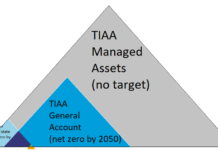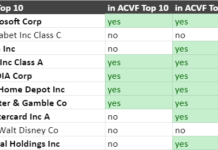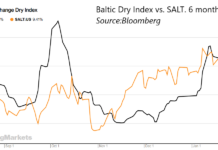A common complaint about investment writers is that we are always willing to tell you the next stock to buy, but we don’t always get around to telling you when to sell. I’m as guilty of this as most: generally, I write about the stocks I’m interested in… which are the ones I’m buying, not selling. And, although I write the occasional negative article (Petrosun Drilling most recently, but also US Sustainable Energy and Global Resource Corporation), these were more stocks to avoid, rather than stocks which had seen their run.
This is unlikely to change. For a start, I’m not selling many alternative energy stocks… I’m using the downturn to add to my holdings, and intend to continue doing so even if the downturn becomes a full-blown bear market, as it well may. What I am selling are stocks I bought in 2001-2004, mostly precious metals mining stocks, and I have not researched any of them for 3 years. I don’t have a lot to say about them, nor would an article fit the Alternative Energy Stocks theme.
In the absence of specific "sell" articles, I thought I’d outline a few rules of thumb I use to know when to sell.
Rule #1: Rebalancing
I have target percentages for both stocks and asset classes, above which I will sell part of my holdings. For the mining stocks mentioned above, whenever they appreciate to more than 11% of my total portfolio, I sell some to bring the percentage back down. For individual stocks, the target depends on how risky I believe the stock is. For large, stable companies this is around 3-5% of my portfolio each, while for more speculative companies, this is less than 1% of my portfolio for any single stock.
Rule #2: Sell Half on a Double
For particularly speculative companies, especially one with negative earnings, I’ll typically sell half of my holdings if the stock doubles from where I bought it. This rule served me well last year with Composite Technology Corporation (CPTC), allowing me to take some gains, but then buy more recently when the stock fell back. I failed to follow this rule with Electro Energy (EEEI) this January, and optimistically put in an order to sell 40% of my holdings at 2.5 times my purchase price ($1.30), but the stock peaked in intraday trading at almost exactly twice my purchase ($1.05.)
Both these tocks have since fallen back, but I was able to buy more of CPTC with part of the gains from my sale, while I have my original position in EEEI.
Rule #3: Capture Short Term Losses
Come tax time, I want all my capital gains to be long term ones, taxed at only 15%. To that end, if I’m sitting on a good sized loss in a stock I bought 9-11 months earlier, I seriously consider selling so that I can use the loss to offset short term capital gains in the coming year. If I’m very bullish about the stock, I will usually buy more, wait a month to avoid a wash sale, and sell the original position. If I’m just neutral on the stock, I sell without buying more first.
Rule #4: Get Paid for Your Decisions
If I plan to sell some of my holdings because of one of the above rules, I often do so using covered calls. For instance, if 4% of my portfolio is currently General Electric (GE) at $37, it would be over 5% if the stock goes to $50, and I would want to sell some because of Rule #1. I can currently sell GE Jan 2010 $50 Calls for around $1. If I sell calls covering half of my position, I make an immediate 1.3% (=1/37 x 1/2) gain on my holdings, and only if the stock goes up to $50 before January 2010 do I have to sell half my holdings… something would do anyway because of Rule #1.
This strategy is very similar to how I often buy stocks, using cash covered puts.
Rule #5: If You Need the Money
If you need the money for something else, it’s quite likely that you will be forced to sell something at precisely the wrong time. Because of that, I always try to keep enough cash around to cover several months of normal or anticipated expenses, and I never buy stocks on margin (because of margin calls). If I need small amounts of cash anyway, I often sell covered calls or cash covered puts, as described in rule #4. Try to plan ahead as far as possible in advance, and keep enough cash that you never have to sell on short notice..
Conclusion
I often think that knowing when to buy and sell is often more important than knowing what to buy and sell. All these rules are simple, but it’s easy to lose track of them chasing the next hot stock tip. These rules are especially valuable in the volatile world of alternative energy stocks, as the examples in Rule #2 show. If you normally come to this blog for stock tips, remember that knowing when as what to sell is at least as important as knowing when and what to buy.
DISCLOSURE: Tom Konrad and/or his clients have long positions in CPTC, EEEI, and GE.
DISCLAIMER: The information and trades provided here are for informational purposes only and are not a solicitation to buy or sell any of these securities. Investing involves substantial risk and you should evaluate your own risk levels before you make any investment. Past results are not an indication of future performance. Please take the time to read the full disclaimer here.









And, of course, if the story has changed vs. your thesis/decision tree etc. OR if reality smacks you hard enough.
I’m sure that going to Moscow looked good to both Napoleon and Hitler but…
Ha! -TK